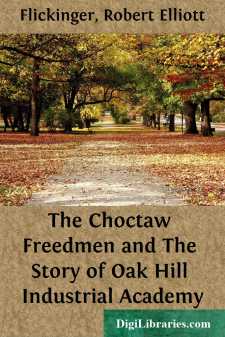Categories
- Antiques & Collectibles 13
- Architecture 36
- Art 48
- Bibles 22
- Biography & Autobiography 813
- Body, Mind & Spirit 142
- Business & Economics 28
- Children's Books 14
- Children's Fiction 11
- Computers 4
- Cooking 94
- Crafts & Hobbies 4
- Drama 346
- Education 46
- Family & Relationships 57
- Fiction 11829
- Games 19
- Gardening 17
- Health & Fitness 34
- History 1377
- House & Home 1
- Humor 147
- Juvenile Fiction 1873
- Juvenile Nonfiction 202
- Language Arts & Disciplines 88
- Law 16
- Literary Collections 686
- Literary Criticism 179
- Mathematics 13
- Medical 41
- Music 40
- Nature 179
- Non-Classifiable 1768
- Performing Arts 7
- Periodicals 1453
- Philosophy 64
- Photography 2
- Poetry 896
- Political Science 203
- Psychology 42
- Reference 154
- Religion 513
- Science 126
- Self-Help 84
- Social Science 81
- Sports & Recreation 34
- Study Aids 3
- Technology & Engineering 59
- Transportation 23
- Travel 463
- True Crime 29
The Choctaw Freedmen and The Story of Oak Hill Industrial Academy
Description:
Excerpt
INTRODUCTION
Our household treasures take familiar places,
Are to us, as if a living tongue
Spake from the printed leaves, or pictured faces!"
The aim of the Author in preparing this volume has been to put in a form, convenient for preservation and future reference, a brief historical sketch of the work and workers connected with the founding and development of Oak Hill Industrial Academy, established for the benefit of the Freedmen of the Choctaw Nation, Indian Territory, by the Presbyterian church, U. S. A., in 1886, when Miss Eliza Hartford became the first white teacher, to the erection of Elliott Hall in 1910, and its dedication in 1912; when the name of the institution was changed to "The Alice Lee Elliott Memorial."
Some who rendered service at Oak Hill Academy, bestowed upon it their best work, while superintendent, James F. McBride and Matron, Adelia M. Eaton, brought to it a faithful service, that proved to be the crowning work of their lives.
The occasion of receiving a new name in 1912, is one that suggests the eminent propriety of a volume, that will commemorate the labors of those, whose self-denying pioneer work was associated with the former name of the institution.
Another aim has been, to place as much as possible of the character building work of the institution, in an attractive form for profitable perusal by the youth, in the homes of the pupils and patrons of the Academy. As an aid in effecting this result, the volume has been profusely illustrated with engravings of all the good photographs of groups of the students that have come to the hand of the author; and also of all the teachers of whom they could be obtained at this time. The portraits of the ministers and older elders of the neighboring churches have been added to these, to increase its general interest and value.
In as much as Oak Hill Industrial Academy was intended to supply the special educational needs of the young people in the circuit of churches ministered to by Parson Charles W. Stewart, the pioneer preacher of the Choctaw Freedmen, and faithful founder of most of the churches in the Presbytery of Kiamichi, a memorial sketch of this worthy soldier of the cross has been added, that the young people of the present and future generations may catch the inspiration of his heroic missionary spirit.
"All who labor wield a mighty power;The glorious privilege to do
Is man's most noble dower."
The ministers of the neighboring churches, in recent years, have been so helpfully identified with the work of the Academy, as special lecturers and assistants on decision days, and on the first and last days of the school terms, they seem to have been members of the Oak Hill Family. The story of the Academy would not be complete, without a recognition of them and their good work. This recognition has been very gratefully accorded in a brief history of the Presbytery of Kiamichi and of the Synod of Canadian.
The period of service rendered by the author, as superintendent of the Academy from the beginning of 1905 to the end of 1912, eight years, was one of important transitions in the material development of Indian Territory....


